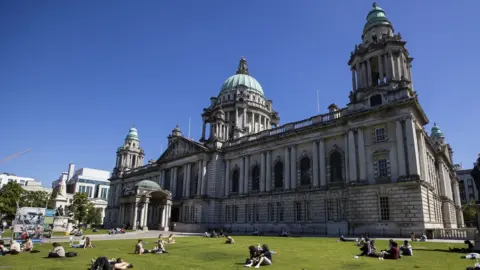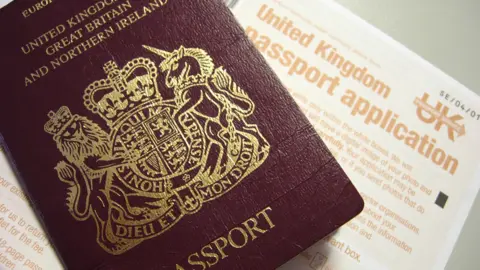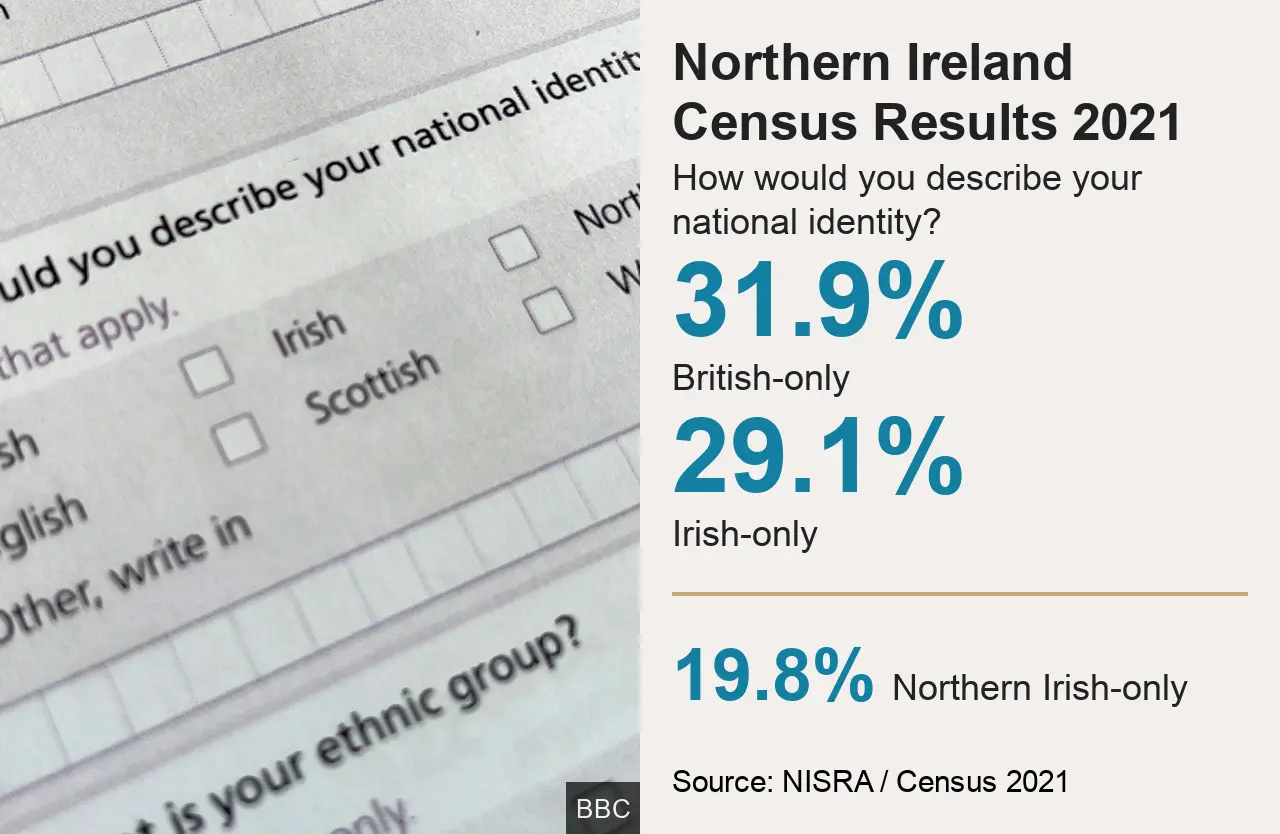Census 2021: More from Catholic background in NI than Protestant
 PA Media
PA MediaThe latest census figures show that for the first time there are more people from a Catholic background in Northern Ireland than Protestant.
The proportion of the resident population which is either Catholic or brought up Catholic is 45.7% compared to 43.48% Protestant.
The previous census, in 2011, found that 45.1% of the population were Catholic or brought up Catholic.
It found 48.4% were from a Protestant or other Christian background.
In terms of national identity, 31.9% said they had a British-only identity, while 29.1% said Irish-only and 19.8% said Northern Irish-only.
Census figures detailing the religious make-up of Northern Ireland were published by the Northern Ireland Statistics and Research Agency (Nisra) on Thursday.
The figures, which are being released in stages, were due to be published on Tuesday but that was delayed due to the Queen's funeral.
Compared with the previous census in 2011, the proportion of people with a British-only identity has decreased.
Meanwhile 8% of people said they were both British and Northern Irish - up from 6.2% in 2011
The latest census was the first to be held since the UK voted in 2016 to leave the European Union.

'A significant and historic moment'

Around 60 questions were posed but in truth only one was going to grab the headlines.
It's now official that those from a Catholic background for the first time in Northern Ireland's 101-year history outnumber those from a Protestant background.
It is a hugely significant and historic moment, but not surprising as the population pattern has been moving in that direction for some time.
In the past 20 years, the number of people from a Protestant background has dropped by more than ten per cent.
A decline which has been linked to an ageing Protestant population with high mortality.
By contrast, the profile of the population from a Catholic background is much younger and in the same 20-year period has risen by around three per cent.
Those pushing for a border poll and united Ireland will be energised by the census figures.
Read more here.


Information was gathered on passports held by people usually resident in Northern Ireland. The statistics were:
- UK passport 53%
- Irish passport 32%
- no passport 16%
In 2011, the percentages were:
- UK passport 59%
- Irish passport 21%
- no passport 19%
The percentage of people holding a British passport fell in every council area, while the numbers holding an Irish passport rose in all council areas.


The proportion of the population born outside Northern Ireland was 11% in 2011. In the latest census, it rose to 13.5%.
Among usual residents aged three years and over, English was not the main language for 4.6%. This compares to 3.1% in the previous census.
The most prevalent main language other than English remains Polish at 1.1%
In terms of other languages, 12.4% had some ability in Irish. In 2011, the figure was 11%.
As for Ulster Scots, the percentage with some ability was 8.1% in 2011, it is now 10.4%.
According to the latest figures, 3.4% of Northern Ireland's population, which is 65,600 people, now belong to ethnic minority groups.
This is around double the 2011 figure (32,400 people) and four times the figures of 2001 (14,300 people).
The largest groups were mixed ethnicities (14,400), black (11,000), Indian (9,900), Chinese (9,500) and Filipino (4,500).
Irish Traveller, Arab, Pakistani and Roma ethnicities constituted 1,500 people or more, the figures show.
Population growth
Belfast is the most diverse local government district (7.1%) followed by Mid Ulster (4%) and Lisburn and Castlereagh (3.9%).
In May 2022 it was announced the population had risen to 1.9 million, the highest figure recorded since Northern Ireland was established in 1921.
The total population was 1,903,100 with slightly more females than males.
People were urged to complete the recent census online if they could, rather than on paper. Eight-out-of-10 people took the online option.
A census occurs every 10 years and participation is compulsory.
As well as total figures, the latest statistics have been broken down at council level.
The 2021 census is the first since the re-organisation of local government in Northern Ireland in 2015 when 11 so-called super councils replaced the existing 26 councils.
More figures will be issued in the coming months relating to marital status, sexual orientation, household composition, health and disability.
